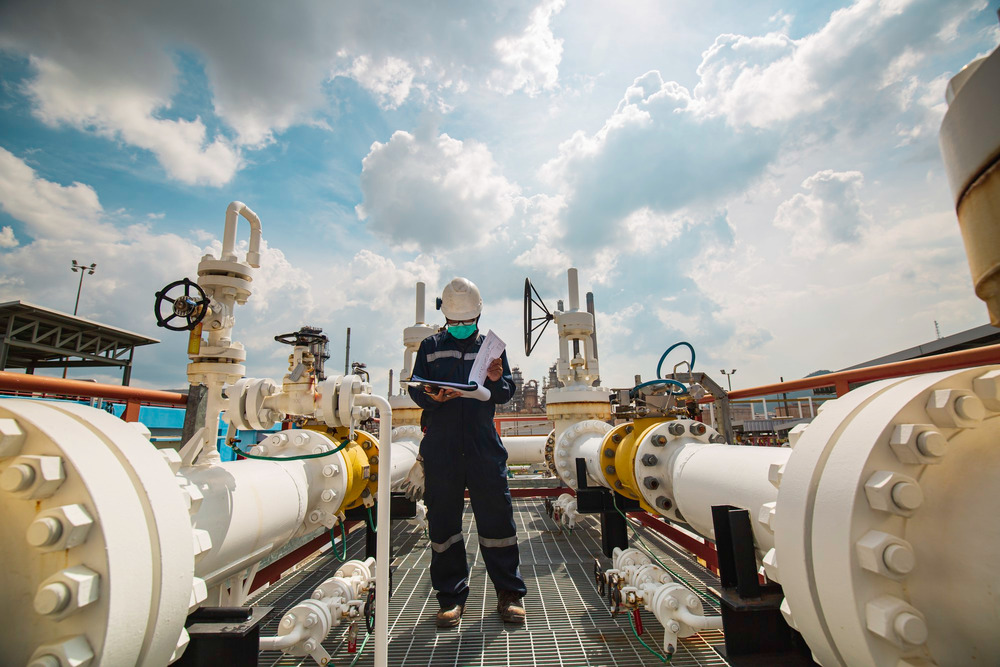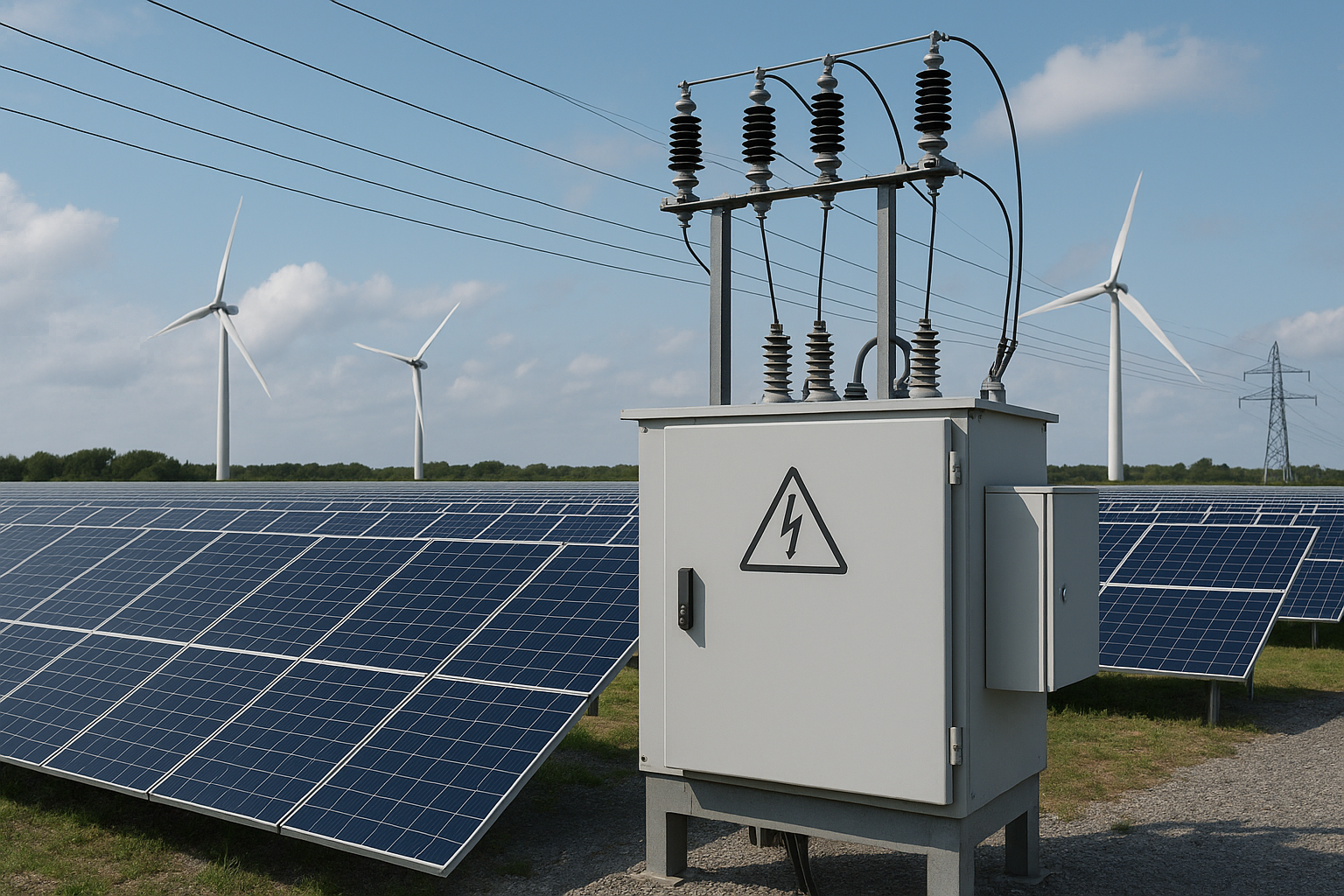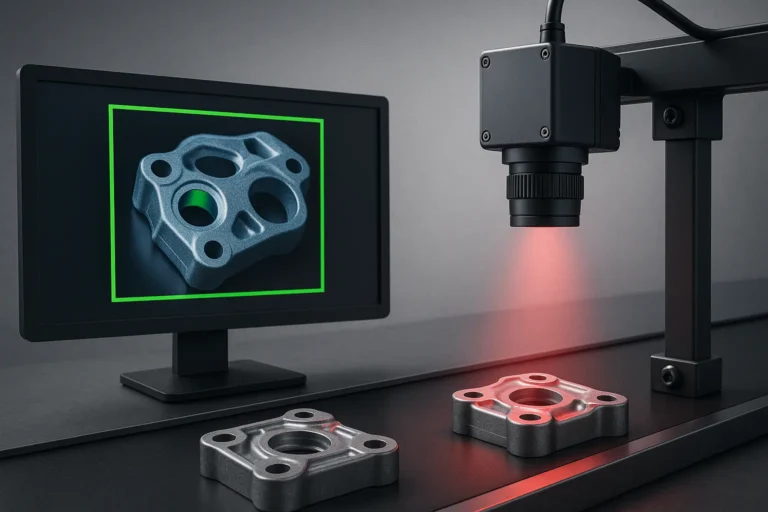Image Processing Systems and Their Applications
Image processing systems are technological solutions designed to analyze, interpret, and manipulate digital images using computer-based algorithms. These systems play...
Devamını Oku

Electrification is the transition from fossil fuel-based technologies to systems that operate using electricity. It plays a pivotal role in reshaping energy production, distribution, and consumption across all sectors. Today, what is electrification represents more than just a technical shift—it signifies a global movement toward sustainable development and clean energy solutions. This transformation is at the heart of global efforts to reduce carbon emissions and limit the impact of climate change.
The rising demand for energy, combined with environmental concerns and advances in technology, has positioned electrification as a key strategy for building a cleaner and more efficient future. Electric vehicles, smart energy grids, heat pumps, and renewable-powered infrastructure are examples of how electrification is being integrated into daily life. It enables systems to be more efficient, easier to monitor, and environmentally friendly, all while reducing dependence on finite natural resources.
By improving the performance and reach of electrification systems, countries and industries are laying the foundation for energy independence and climate resilience. Electrification is not limited to power generation—it is a widespread transformation affecting transportation, industry, construction, and residential sectors. The answer to what does electrification mean now encompasses innovation, sustainability, and global collaboration.
Electrification refers to the process of replacing technologies that use fossil fuels with those that operate using electricity. It is a fundamental concept in today’s global efforts to achieve energy efficiency, reduce carbon emissions, and transition toward a sustainable energy model. At its core, what does electrification mean involves a systemic change in how we power homes, businesses, vehicles, and industrial processes. The term encompasses not just the adoption of electric systems, but also the infrastructure and digital controls needed to support their integration.
This process plays a key role in enabling renewable energy sources like wind, solar, and hydro to become primary power suppliers. Electrification reduces reliance on coal, oil, and natural gas, while improving the flexibility and intelligence of modern power systems. In practical terms, electrification can be seen in electric vehicles, heat pumps in buildings, and automation in manufacturing plants powered by electricity rather than fuel. With innovations in battery storage and grid modernization, electrification opens the door to a cleaner, smarter, and more connected energy future. As such, the term defines a pathway to achieving energy independence and long-term environmental sustainability.
Electrification systems are the technologies and infrastructure that enable the generation, distribution, and use of electricity across various sectors. These systems include components such as power generation units (like solar panels or wind turbines), electrical grids, substations, transformers, and end-use devices like electric vehicles or heating systems. At their core, these systems replace traditional fossil fuel-based mechanisms with electrical alternatives to enhance efficiency and reduce environmental impact. Understanding what are electrification systems is essential in grasping how modern societies are shifting toward cleaner and more sustainable energy models.
Beyond just hardware, electrification systems also involve smart technologies like sensors, control software, and data analytics tools that optimize performance. These tools allow for real-time monitoring, energy load balancing, and predictive maintenance. Electrification systems are scalable and adaptable, making them suitable for residential, commercial, industrial, and transportation applications. As the demand for clean energy grows, electrification systems are evolving to integrate more renewable energy, storage solutions, and intelligent automation—turning traditional power infrastructures into flexible, resilient, and carbon-free networks.
Electrification in energy production and distribution refers to the transformation of traditional power systems into electricity-based infrastructures powered by renewable or low-emission sources. This shift involves generating electricity from sustainable resources—such as solar, wind, hydro, and geothermal—and delivering it efficiently through modern grids. As the global energy mix changes, electrification enables more decentralized and intelligent energy networks that can adapt to real-time demand and supply.
In distribution, electrification improves grid reliability and reduces transmission losses through smart grid technologies and digital monitoring systems. These advancements allow electricity to reach homes and businesses more efficiently while also enabling bi-directional flow—where consumers can generate and feed electricity back into the grid. With the help of electrification systems, energy production becomes cleaner and more responsive, paving the way for a low-carbon future and accelerating the global transition away from fossil fuels.
Electrification in the transportation sector is one of the most visible and impactful developments in the global energy transition. It involves replacing internal combustion engine vehicles with electric vehicles (EVs) powered by batteries or hydrogen fuel cells. This shift reduces dependence on fossil fuels and significantly cuts greenhouse gas emissions. The adoption of EVs is growing rapidly, supported by innovations in battery technology, lower operating costs, and increasing consumer demand for sustainable mobility.
Alongside electric vehicles, the expansion of charging infrastructure plays a crucial role in enabling large-scale electrification. Charging stations—both public and private—are being deployed in urban centers, highways, workplaces, and residential areas. These stations are integrated into smart grids, allowing for load management and renewable energy use. Through comprehensive electrification systems, transportation is becoming cleaner, quieter, and more efficient, setting the foundation for a zero-emission mobility future.
Industrial electrification involves replacing fossil fuel-powered equipment and processes in factories and production facilities with electric alternatives. This includes electric boilers, induction heating systems, electric forklifts, and automated machinery powered by electricity. Electrifying industrial operations reduces emissions, improves energy efficiency, and enables better integration with renewable energy sources. As industries seek to meet climate goals, electrification is becoming a central strategy for decarbonization.
These applications not only reduce operational costs over time but also offer greater precision, control, and automation in manufacturing environments. Combined with digital monitoring and smart controls, electrified systems allow for predictive maintenance, real-time optimization, and minimal energy waste. By implementing advanced electrification systems, industries across sectors—from food processing to heavy manufacturing—are transforming how they produce goods in a cleaner, more sustainable way.
Electrification in buildings and homes focuses on replacing gas and oil-based systems with electric technologies that are cleaner and more energy-efficient. This includes electric heating systems like heat pumps, electric water heaters, induction cooktops, and energy-efficient appliances. These upgrades significantly reduce carbon emissions and allow homeowners and building operators to rely more on renewable electricity. The implementation of electrification systems in residential and commercial buildings is a major step toward decarbonizing the built environment.
Modern buildings also integrate smart meters, energy management systems, and rooftop solar panels to maximize efficiency and control. Electrification allows for better indoor air quality, lower energy bills, and the potential for grid interaction through battery storage or demand response. Whether in new constructions or retrofits, electrifying homes and commercial spaces is a practical and impactful strategy for achieving sustainable living.
The main goals of electrification center around creating a cleaner, more efficient, and sustainable energy system. By shifting from fossil fuel-based systems to electric-powered alternatives, societies aim to reduce their carbon footprint and mitigate climate change. One of the primary objectives is to modernize energy infrastructure in a way that supports the integration of renewable sources like solar, wind, and hydropower. This transition enhances long-term energy security while promoting energy independence and innovation.
Electrification also aims to improve energy efficiency across sectors such as transportation, industry, and residential buildings. Through the use of smart technologies and electrification systems, energy can be distributed, managed, and consumed more effectively. Electrification reduces environmental pollution, lowers energy costs, and supports economic development through green job creation. These goals collectively form the foundation of a low-carbon, resilient future powered by clean electricity
Transitioning from fossil fuels to electric energy is a core component of electrification efforts. This shift involves phasing out coal, oil, and natural gas in favor of electricity sourced from cleaner, renewable alternatives. The change is driven by the need to reduce greenhouse gas emissions and limit the environmental damage caused by fossil fuel extraction and combustion. By electrifying systems across sectors, societies can move toward more sustainable and efficient energy use.
This transition includes the development of electric transportation, heating, and industrial processes that previously relied on carbon-intensive fuels. It also requires significant upgrades to power grids and electrification systems to support increased demand and ensure reliability. With policy support and technological innovation, the shift to electric energy lays the groundwork for a decarbonized economy and a cleaner planet.
One of the primary goals of electrification is to increase energy efficiency across all sectors. Electric technologies are generally more efficient than their fossil fuel counterparts because they convert a higher percentage of input energy into usable output. For example, electric motors and heat pumps require significantly less energy to perform the same tasks as combustion-based systems. By shifting to electric solutions, businesses and households can reduce energy waste and lower operational costs.
Modern electrification systems are often paired with smart controls and real-time monitoring tools that further optimize energy usage. These systems allow for load management, predictive maintenance, and adaptive operation based on demand. Increased energy efficiency not only cuts emissions but also reduces stress on the power grid, making the entire energy ecosystem more resilient and sustainable.
Reducing carbon emissions is one of the most critical objectives of electrification. Fossil fuel combustion is a major source of CO₂ and other greenhouse gases that contribute to climate change. By transitioning to electric systems powered by renewable energy sources, we can significantly cut these emissions. This shift is essential for meeting international climate targets and ensuring a healthier, more sustainable environment for future generations.
Electrification systems help lower emissions by replacing polluting technologies with cleaner electric alternatives. Whether it’s electric vehicles replacing gasoline engines or heat pumps replacing oil-based heating, each change contributes to a cumulative reduction in carbon output. When powered by wind, solar, or hydroelectric energy, electrified solutions become virtually emission-free, making them a cornerstone of global decarbonization strategies.
Promoting sustainable energy systems is a central goal of electrification. These systems rely on renewable energy sources, such as solar, wind, and hydropower, which are abundant and environmentally friendly. Electrification helps build a framework where clean energy can be generated, stored, and used efficiently across all sectors—reducing the reliance on finite, polluting fossil fuels.
Through the implementation of advanced electrification systems, energy use becomes more intelligent, interconnected, and adaptable. These systems support grid modernization, energy storage integration, and real-time data management. As a result, they create resilient infrastructures that can meet rising energy demands while minimizing environmental impact. In this way, electrification not only powers daily life but also drives the shift toward a fully sustainable global energy model.
Electrification offers numerous advantages across economic, environmental, and operational dimensions. One of the most significant benefits is the reduction in greenhouse gas emissions, as electric systems—especially when powered by renewables—produce little to no direct emissions. This helps combat climate change and improves air quality. Additionally, electrification often leads to improved energy efficiency, as electric motors and heating systems typically consume less energy than fossil-fuel-based alternatives.
From a technological perspective, electrification systems are easier to automate, monitor, and maintain. They enable integration with smart technologies that optimize energy use in real time. Economically, electrification reduces long-term operating costs, especially as electricity prices become more stable and battery storage technologies improve. Furthermore, it supports the development of green industries and jobs, contributing to sustainable economic growth. Overall, electrification is a key pathway to building a cleaner, more efficient, and future-ready energy ecosystem.

Image processing systems are technological solutions designed to analyze, interpret, and manipulate digital images using computer-based algorithms. These systems play...
Devamını Oku
Exproof refers to a type of equipment or system specifically designed to prevent explosions in hazardous environments where flammable gases,...
Devamını Oku
Modbus is one of the most widely used communication protocols in automation. Introduced in 1979 by Modicon (now Schneider Electric),...
Devamını OkuPROTECTION OF PERSONAL DATA
WEBSITE COOKIE POLICY
Your personal data; It is one of the leading principles of our Organization to protect the privacy of visitors to the website (www.adatech.com.tr) operated by ADATECH as the data controller. This Cookie Usage Policy (“Policy”) explains to all our website visitors and users which types of cookies are used and under what conditions.
Cookies are small text files stored on your device or network server by websites you visit on your computer or mobile device.
They are generally used to provide you with a personalized experience during your use of the website you visit, to improve the services offered and to improve your experience, and may contribute to ease of use while browsing a website. If you do not prefer the use of Cookies, you can delete or block Cookies in your browser settings. However, we would like to remind you that this may affect your use of our website. Unless you change your cookie settings in your browser, we will assume that you accept the use of cookies on this website.
1. WHAT KIND OF DATA IS PROCESSED IN COOKIES?
Cookies on websites, depending on their type, collect data about your browsing and usage preferences on the device you visit the site. This data includes information about the pages you access, the services and products you review, your preferred language option and other preferences.
2. WHAT is a solution and what are its intended uses?
Cookies are small text files that are stored on your device or network server through browsers by websites you visit. These small text files, which contain your preferred language and other settings on the site, help us remember your preferences the next time you visit the site and make improvements to our services to improve your experience on the site. Thus, you can have a better and personalized usage experience on your next visit.
The main purposes of using cookies on our Website are listed below:
3.TYPES OF COOKIES USED ON OUR WEBSITE
3.1. Oturum Çerezleri
Session cookies ensure that the website functions properly during your visit. They are used for purposes such as ensuring the security and continuity of our sites and you during your visit. Session cookies are temporary cookies, they are deleted when you close your browser and come to our site again, they are not permanent.
3.2. Persistent Cookies
These types of cookies are used to remember your preferences and are stored on your device via browsers. Persistent cookies remain stored even after you close your browser or restart your computer from which you visited our site. These cookies are kept in subfolders of your browser until they are deleted through your browser’s settings.
Some types of persistent cookies may be used to provide you with special suggestions, taking into account issues such as your purpose of using the Website.
Thanks to persistent cookies, if you visit our Website again with the same device, it is checked whether there is a cookie created by our Website on your device and if there is, it is understood that you have visited the site before and the content to be transmitted to you is determined accordingly and thus a better service is provided to you.
3.3. Mandatory/Technical Cookies
These cookies are essential for the website you visit to function properly. The purpose of such cookies is to provide necessary services by enabling the website to function. For example, it allows you to access secure parts of the website, to use its features, to navigate on it.
3.4. Analytical Cookies
They collect information about the way the website is used, the frequency and number of visits, and show how visitors navigate to the site. The purpose of using such cookies is to increase performance by improving the way the site functions and to determine the general trend direction. They do not contain data that could enable the identification of visitors. For example, they show the number of error messages displayed or the most visited pages.
3.5. Functional/Functional Cookies
It saves the choices made by the visitor within the site and remembers them on the next visit. The purpose of such cookies is to provide ease of use to visitors. For example, it prevents the site user from re-entering the user password on each page they visit.
3.6. Targeting/Advertising Cookies
They enable the measurement of the effectiveness of advertisements served to visitors and the calculation of the number of times the advertisements are viewed. The purpose of such cookies is to serve ads customized to the interests of visitors.
Likewise, they enable the detection of visitors’ interests specific to their browsing and the presentation of appropriate content. For example, it prevents the advertisement shown to the visitor from being shown again in a short time.
4. HOW TO MANAGE COOKIE PREFERENCES?
To change your preferences regarding the use of cookies or to block or delete cookies, simply change your browser settings.
Many browsers give you the option to accept or reject cookies, accept only certain types of cookies, or be alerted by the browser when a website requests to store cookies on your device so that you can control cookies.
It is also possible to delete cookies previously saved in your browser.
If you disable or refuse cookies, you may need to set some preferences manually, some features and services on the website may not function properly as we will not be able to recognize and associate your account. You can change the settings of your browser by clicking on the relevant link from the table below.
5. ENFORCEMENT OF WEBSITE PRIVACY POLICY
Website Privacy Policy …./…./…./…. . is dated. In case all or certain articles of the Policy are renewed, the effective date of the Policy will be updated. The Privacy Policy is published on the website of the Authority (www.adatech.com.tr) and made available to the relevant persons upon the request of the personal data owners.
ADATECH
Address: Esenyalı Neighborhood Yanyol Street Varyap Plaza No:61-148 Pendik / Istanbul
Telephone: +90 (216 ) 514 80 69
E-mail: [email protected]
Web Address: www.adatech.com.tr